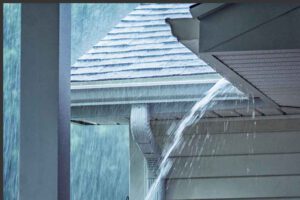If you live in an area with frequent rains, you may want to invest in a gutter maintenance program. Regular cleaning will help you prevent clogging and leaks. Regardless of the amount of rainfall that hits your home, you should clean your gutters regularly to keep them functioning properly. Besides, proper gutter maintenance will prevent problems like leaking and cracking, which can result in costly repairs. If you have questions about gutter maintenance, call a professional roofing company.

While hiring a roofing company is an excellent idea, remember to hire a contractor with extensive experience to inspect your gutters. Newer companies may not have the same reputation as experienced roofers, but they are still reliable. Getting your gutters installed by a reputable roofer will help prevent many problems and keep your gutters working as they should. Make sure you hire a contractor that has been in the business for a few years and has had plenty of experience.
One of the main causes of gutter damage is hailstorms. Even small hail can cause damage to your gutters. Some hail can punch holes in your gutter system, while larger ones may even tear them off completely. A small hole can be easily repaired, but if you wait too long, it can lead to much more costly problems. A faulty installation can also cause your gutters to rust and crack. In addition, a poorly installed roof can lead to other problems with the drainage system.
One of the biggest causes of gutter damage is hail. Pea-sized hail can dent or puncture the gutter system. Larger hail can even tear them off completely. Even if it doesn’t cause any damage, minor damage can lead to rust and cracking. Inspecting your gutters periodically will help you to catch any minor problems before they become serious. If you see a crack or dislodged parts, you can take the necessary action.
In addition to these common causes, there are other factors that can lead to gutter damage. Not only can these problems make it impossible for your gutters to function correctly, but they can also make them more prone to other problems, such as water pooling on your roof. Therefore, it is important to hire a reliable roofer to perform a proper installation for you. Oftentimes, a new roofing contractor can be just as good as an established one.
Choosing the right roofer is an important part of gutter maintenance. A new roofer may be cheaper than an experienced one, but he or she needs to have a license to work in the area. However, there are many other reasons that lead to gutter damage. Fortunately, new roofing contractors are just as reliable as experienced ones. But it is essential to hire someone who has the experience to install your roof. A professional will be able to identify any problems and suggest the best solutions for your home.
As far as gutters go, they are highly susceptible to damage from various sources. The impact of hailstones can cause small dents and punctures. Galvanized steel gutters are usually repairable, but they can be damaged in the process. Hence, regular inspection is an important part of gutter maintenance. You can call a roofing contractor to repair any damages and maintain your gutters to ensure that they are functioning optimally.
Hailstorms are the leading cause of gutter damage. Even a pea-sized hail can dent the gutter system. Large hail can puncture the gutter and knock it off your home. While it may seem like a small issue, the problem is often much worse than the initial damage. Not only will your home be affected by hail, but it can also cause damage to the foundation of your house. And a poor roof may not be up to par.
Incorrectly constructed downspouts are another common cause of gutter damage. A properly installed downspout should be about four to six feet away from an exterior wall. It is important to follow the slope of the downspout to avoid standing water. This will cause clogged gutters and premature cracking of joints. The same rule applies to the troughs. They should be at least four to six feet away from the exterior wall of your home.